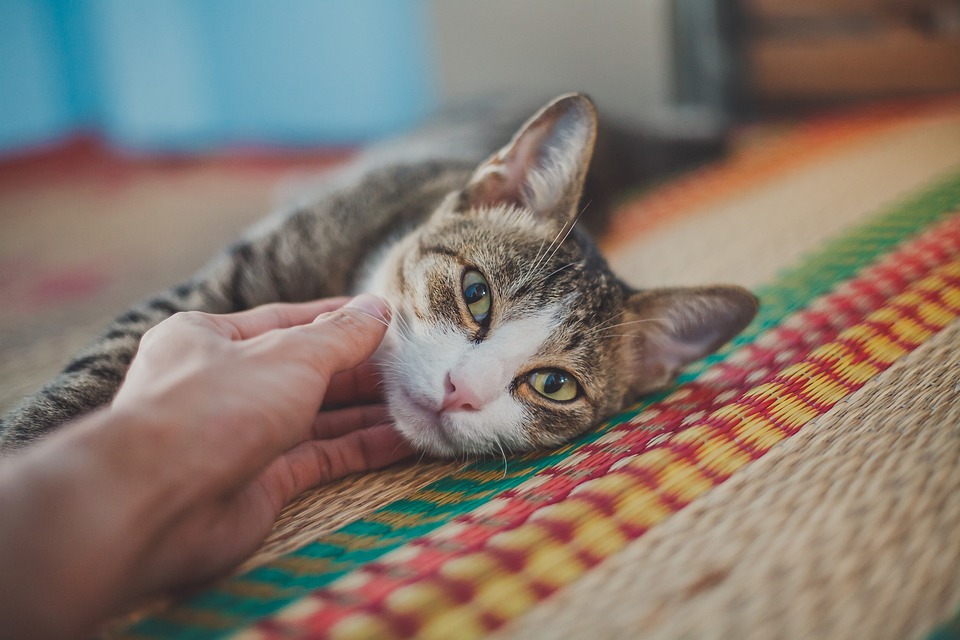Cats are known for their independent and mysterious nature. However, there are moments when their behavior can leave us puzzled and concerned. One such behavior is crying outside closed doors. In this article, we will delve into the reasons behind this distressful behavior and explore possible solutions to alleviate their hidden pain.
Why do cats cry outside closed doors?
1. Separation Anxiety: Cats are social creatures and can form strong bonds with their human companions. When separated from their beloved owners, they may exhibit signs of separation anxiety, including crying outside closed doors.
2. Attention-seeking behavior: Cats are masters of manipulation and can use their cries to grab your attention. They may cry outside closed doors to get your focus or attract you to open the door.
3. Fear and insecurity: Closed doors can create a sense of insecurity for cats, especially if they are unsure of what lies behind them. They cry in an attempt to express their fear or seek reassurance.
4. Curiosity and exploration: Cats are naturally curious beings. Closed doors can act as barriers to their exploration, making them vocalize their frustration and desire to investigate the unknown.
Understanding your cat’s distressful cries:
1. Vocalizations: Cats may emit a range of vocalizations, including meowing, yowling, or even howling. Each vocalization can indicate different emotions or needs. Pay attention to the tone, intensity, and duration of their cries to understand their distress level.
2. Body language: Alongside vocalizations, cats may exhibit specific body language cues. These can include flattened ears, dilated pupils, tail flicking, or pacing back and forth. Observing their body language can provide insights into their emotional state.
3. Time and frequency: Take note of when and how often your cat cries outside closed doors. Identifying patterns can help determine if certain triggers or events are causing their distress.
Addressing your cat’s distress:
1. Open communication: Ensure your cat has a safe and comfortable environment where they can express their needs. Encourage open communication by responding promptly to their cries, offering affection, and engaging in playtime.
2. Prevention strategies: If separation anxiety is the cause, gradually introduce your cat to being alone by leaving the room for short periods and gradually increasing the time. Provide them with stimulating toys, scratching posts, or treats to keep them occupied.
3. Creating a cat-friendly environment: Minimize closed doors within the household to reduce feelings of confinement. Install cat flaps or use baby gates to allow your cat to explore and have access to different areas.
4. Seeking professional help: If your cat’s distressful cries persist despite your efforts, it may be beneficial to consult with a veterinarian or a professional animal behaviorist. They can provide personalized advice and guidance to address your cat’s specific needs.
FAQs (Frequently Asked Questions):
1. Q: Are certain cat breeds more prone to crying outside closed doors?
A: While individual personalities may vary, there is no specific cat breed that is more prone to this behavior. It is more dependent on their individual experiences, socialization, and environmental factors.
2. Q: How can I differentiate between attention-seeking cries and distressful cries?
A: Attention-seeking cries are often shorter in duration and may stop once your cat achieves their desired outcome. Distressful cries, on the other hand, may be more intense, prolonged, and accompanied by anxious body language.
3. Q: Should I punish my cat for crying outside closed doors?
A: Punishment is not recommended as it can escalate your cat’s distress and damage the trust between you. Instead, focus on understanding the underlying cause of their behavior and addressing it with patience, positive reinforcement, and environmental modifications.
In conclusion, cats crying outside closed doors can be a distressful experience for both the cat and their owners. By understanding the reasons behind this behavior and adopting appropriate strategies, we can help alleviate their hidden pain and create a harmonious living environment for our feline companions.








